There are many free utilities that let you adjust a computer monitor’s brightness, contrast and gamma using sliders or keyboard shortcuts. Of course, all LCD/LED monitors have control buttons for adjusting screen brightness and contrast but these being physical buttons are difficult to use and often require multiple presses to navigate inconveniently little on-screen displays (OSD) and menus. Software controls are easier to use.
However, most brightness control software don’t actually communicate with the display monitor. They darken or brighten the screen by adjusting brightness and contrast information of the image rendered on the monitor. This is similar to adjusting brightness and contrast of a picture taken with a digital camera using image editing software. These software work best only when you need to reduce the brightness. Attempting to increase brightness of the monitor will result in a washed out image without actually increasing the light output and hence the brightness of the display or improving the details in the image.
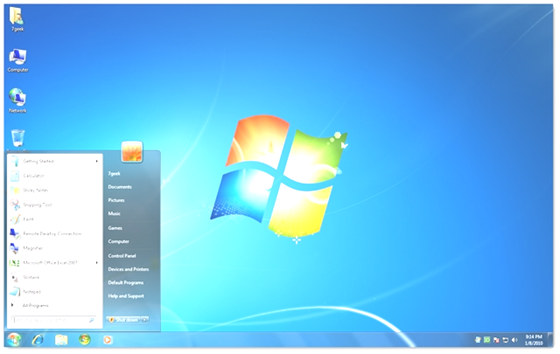
This is how a Windows 7 desktop looks when you increase the brightness of the display using brightness adjusting software. Colors are faded and details lost.
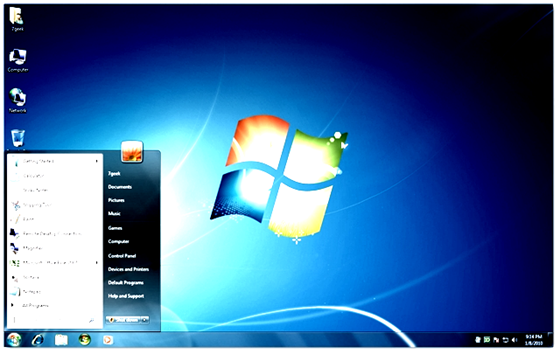
This is how a Windows 7 desktop looks when you increase the contrast using software. Darkened screen and again details lost.
Programs that works by this method are Gamma Panel, Desktop Lighter, Dim Screen and pretty much any display brightness adjuster you find for download.
Access Monitor’s OSD Controls for Brightness and Contrast via Software
To control a display monitor’s real light output and display parameters, the software needs to be able to communicate with the monitor and this possible through the Display Data Channel or DDC protocols.
DDC is a collection of communication protocols between a computer display and a graphics adapter that enables the display to communicate its supported display modes to the adapter and to enable the computer host to adjust monitor parameters without touching any of the control buttons on the monitor.
All three types of computer display connectors namely VGA, DVI and HDMI have dedicated pins and wires to carry signals to and fro between the monitor and the video card as specified by the DDC protocol. Most LCD and LED monitors support DDC, but unfortunately not all video adapters (or graphics card) support it.
Try out these following software to see which one works on your machine.
Display Tuner is a free program that provides a convenient way to control the brightness, contrast, color settings or geometry of your monitor using the mouse or keyboard shortcuts. You can create different profiles with different display settings, say for example – games, movies and Internet, and switch to any of them by pressing a customizable hotkey combination.

Additionally, Display Tuner provides useful information about your monitor like manufacturer, serial no and manufacturing date. You can even use it adjust volume level of your speakers and microphone.
I was using Display Tuner with my LG Flatron monitor with an NVidia 7-series graphics card, but it quit working when I replaced the card with a GeForce 210.
NEC NaViSet is another free program that provides access to display monitor adjustment controls via an easy to use, intuitive software interface. NaViSet was developed for using with NEC display monitors but should work with any monitor that supports DDC. Unfortunately, the program hasn’t been updated since 2005 and the product page says Windows 2000 and XP only. The program does run on Windows 7 but is unable to detect my monitor, possibly because of my display adapter.
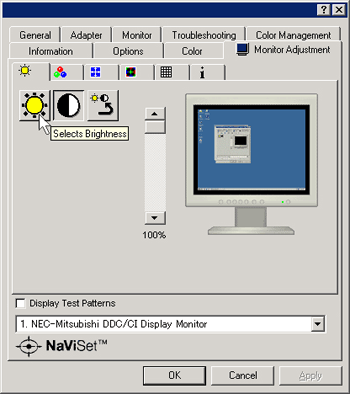
If you can’t get neither Display Tuner nor NaViSet to function, you have another option and quite possibly your last – ScreenBright.
ScreenBright is a simpler program that lets you adjust the brightness and contrast via two sliders. This is a portable program and should work with your video adapter, at least it does with mine.
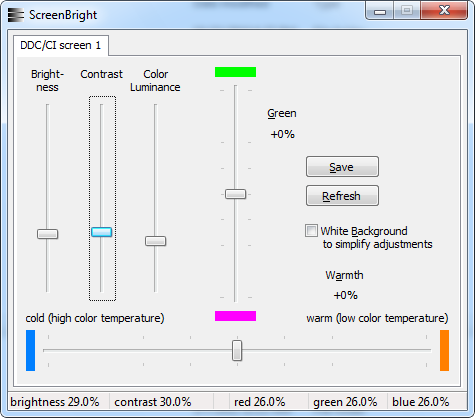

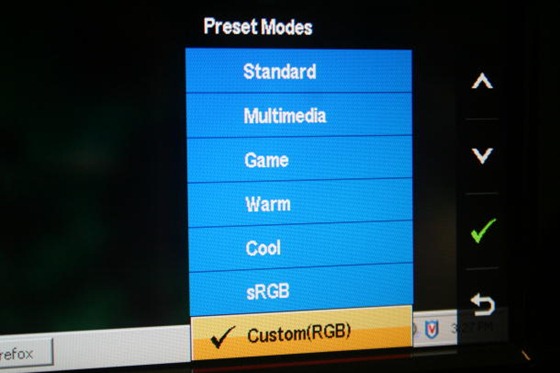
thanks
ReplyDeleteThank You Very Much!
ReplyDeleteThanks a Tonnn!! man!! It was really Helpful.:)
ReplyDeletevery useful. although the first one is iffy, so make sure that it will really get the job done. (it tells you if it can't)
ReplyDeleteTHANK YOU!
ReplyDeleteScreen Bright did it for me :D
Really helpful! Thanks a ton!
ReplyDeletethankssss
ReplyDeleteI found a tool similiar to screenbright, but more easy to use:
ReplyDeleteClickMonitorDDC is a portable freeware tool to adjust brightness or contrast of a DDC compatible monitor by simply clicking a dynamic notification icon in the taskbar tray area, also supports shortcut icon command-line arguments
http://clickmonitorddc.bplaced.net/